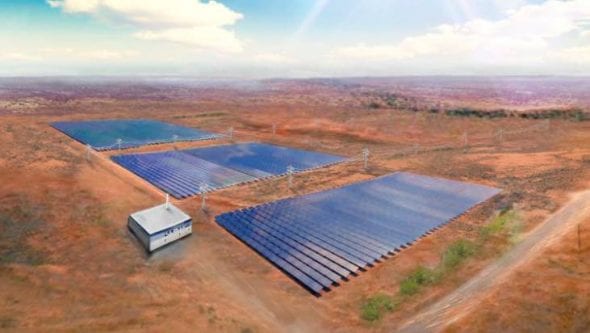The South Australia government is expected to announce the winner, or winners, of its 100MW battery storage tender in the next week, and will need to do if it is to have the equipment installed by the coming summer as planned.
Candidates shortlisted by the government for the biggest battery storage tender in Australia to date – and one of the biggest in the world – say they are expecting an announcement possibly later this week, which would give them five months to have the installation in place by December 1.
The S.A. government is making battery storage one of its key priorities as it seeks to ensure that the state-wide blackout of last year, and the load shedding events of earlier this year are not repeated this summer.
The Australian Energy Market Operator has underlined how important this storage capacity will be in maintaining the state within reliability standards this summer and to keep the lights on (see graph above).
The government also wants to build a 250MW peaking gas fired generator, but that won’t be ready in time, and instead it will have to rely on 200MW of diesel gen-sets to be installed by SA Power Networks, which last week won a special dispensation from the energy regulator to do so.
Network companies are not normally allowed in the generation game – although some are making a pitch to do so, particularly for micro-grids and the like – but the Australian Energy Regulator ruled SAPN could operate the diesel generators, but only in the case of emergency, and as long as it didn’t boast about it (market it).
Another key plank of the government’s energy plan – the establishment of a new energy security target – has been put on hold for six months, amid questions about whether it would ever by introduced.
The reason for the delay is ostensibly to gauge the response and developments to and arising from the Finkel Review, and the decision was announced the day after Finkel was released.
But most people saw Finkel coming, and it is thought that the poor reaction to the details of the government’s energy security target, and its proposed preference for “real inertia” over other services that could be provided by renewables with battery storage may have played a role.
The EST ostensibly aims to lift the amount of “dispatchable” generation situated within the state from 36 per cent (its current level with its gas generators) to 50 per cent by 2025.
But there are fears the rules as presented would simply mean more gas generation, and effectively halt the installation of more wind and solar plants, whose share is already around 50 per cent of demand.
Energy minister Tom Koutsantonis said in a statement if the federal government did approve a clean energy target, then it was likely that the state’s EST would fold into that mechanism.
What might be interesting is that if the CET does not go ahead – due to Coalition in-fighting between moderates and conservatives – but new “dispatchable generation” rules do get approved.
That will likely see AEMO given control over how much storage or firming capacity is needed within a region, and what type (real, synthetic or other).
That may also obviate the need for an EST, although the state has moved on its energy plan because it lost faith in NEM institutions during the blackout and load-shedding. The new AEMO chief Audrey Zibelman, however, is playing a pro-active role.
She has been one of the key drivers behind a demand management initiative that will seek 100MW of capacity in South Australia and Victoria that can be delivered at critical moments by rewarding large and small users to turn off machines or shift their load.
That is expected to be in place by December 1 and has also been extended to NSW, where 70MW is being sought in state dominated by coal and gas but which also ran into load shedding scenarios.
All eyes on the short term, however, will be on the storage tender – given the sheer scale of the tender and the profile of those competing for the mandate, with all major battery storage technologies – including Tesla, LG Chem, Greensmith, Kokam and others – in the running.
The tender called for 100MW/MWh of storage, but allowed for variations, including up to 200MWh of storage and for installations in different sites.
Victoria is also conducting its own tender for battery storage – although its deadline is for the installation to be in place by January 1, with two installations of 20MW of capacity and a total of at least 100MWh of storage.
Applications closed a fortnight ago and the government says it received a “strong” response. More than 100 expressions of interest were received in the first round.
An independent assessment panel will undertake short-listing and assessment, ahead of the Minister making a final decision on projects approved for funding.
“We anticipate being able to announce the successful proponents by late August 2017,” a spokesman said. “Contracts are expected to be executed and projects commence in late August ahead of the January 2018 construction completion.”
Last week, the Northern Territory government announced that it had awarded a tender for 5MW of battery storage capacity (with 40 minutes storage) to New Zealand utility Vector, using LG Chem batteries, for Alice Springs to manage and expand that city’s high penetration of solar.












